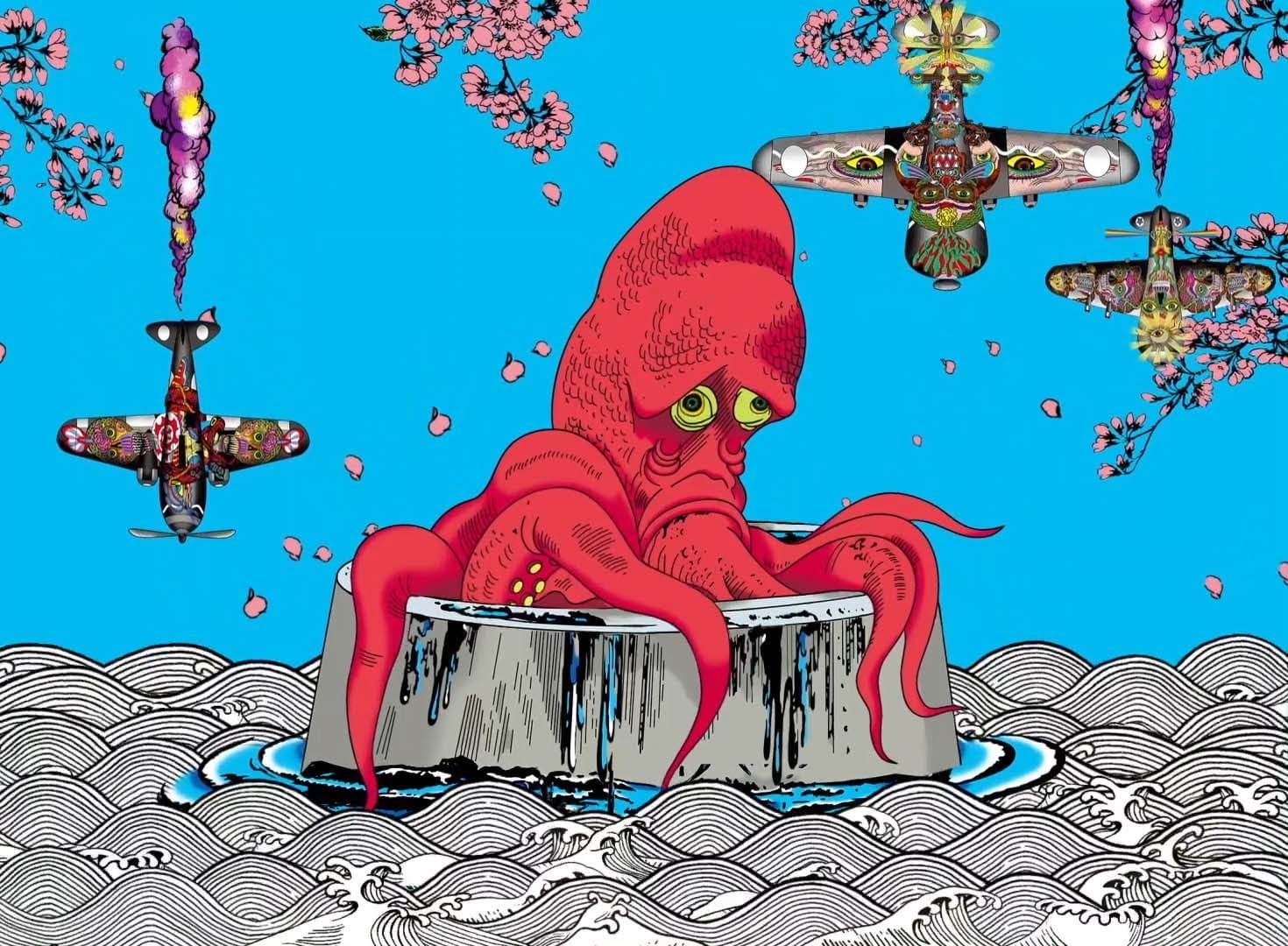Nanzuka will present Keiichi Tanaami’s fresh animation work “Red Shadow” at Meridians section.
The new film by the 85-year old artist Keiichi Tanaami, Red Shade, is a convergence of childhood memories of World War II with the images of western Pop introduced to Japan in the years of reconstruction. Tanaami has created a spectacular narrative that draws direct inspiration from his own dreams, which were always at the core of his psychedelic montages. While efforts to give form to the non-visual world have been represented by surrealism and other art movements prior to the 1960s, Tanaami’s interests are not limited to dealing with unitary memories and dreams. Citing a theory from American psychologist John Kotre, who describes in his book White Gloves (1997) how ‘people subconsciously reconstruct their memories as they live,’ Tanaami continues to study the manner by which his memories are in constant transformation: dynamic and alive. Indeed memories as living entities are at the very source of his influential work.
Red Shade: A New Work like a Puzzle that can be Freely Rearranged
Keiichi Tanaami
Many of my paintings have been created on the premise that they can move. What would happen if the scene depicted in Velázquez’s masterpiece Las Meninas, suddenly started moving? Even just the thought of this excites me. The artist himself seen standing to the left in front of a large canvas, could on the spur of the moment paint the entire pictorial space white. Many of the paintings of Giorgio de Chirico that I greatly admire, also depict moments within a certain course of movement. Although Chirico himself may state otherwise, I cannot help but feel that such is the case. For instance, in his representative work Mystery and Melancholy of a Street, I am ever curious as to the kind of drama that that could emerge the next moment between the girl running with a hoop in the lower left corner of the painting, and the ominous black shadow in the distance.
My uncontrollable fantasies became more and more heated, and I eventually came up with the idea to set Chirico’s painting in motion through use of animation. The result is the work Chirico (2008), which I produced in collaboration with animator Nobuhiro Aihara. The work features a self-portrait of Chirico that is repeatedly created and deconstructed, and the girl with the hoop as seen in the deserted city, runs across the screen with movements that extend far beyond my imagination. I don’t know what Chirico would think, but I personally am very fond of this animated work.
My interest in movement isn’t newfound. As a child, I had been fascinated with movement and things that moved. My best playmate at the time was a magic lantern manufactured in Britain, which my uncle had left to me. After I got bored of screening a film of Mickey Mouse that was all but 2 meters long, I made scratches on the film with a knife, and was overwhelmed with excitement at the swashbuckler where a scratched up Mickey was on sheer rampage. The few rolls of film I had soon became scratched, torn, and punctured, and looking back on it today, I cannot help but wonder why I had persistently continued in these screenings. The next thing that came to my mind was throwing a live sparrow into the heated magic lantern. The sparrow would create a wild ruckus due to the heat from the bare light bulb, and would eventually stop moving. It would be a black and white image projected onto the entire wall. My mother, who noticed the strange odor caused by the burning sparrow, confiscated my magic lantern, quickly bringing this dangerous experiment to an end.
There was a small movie theater in the middle of Gonnosuke-zaka near Meguro station, where I went to see Mickey Mouse every day. The purpose of my visits was to make sketches of the animated film Steamboat Willie under the dim light of the emergency exit sign. This act of faithfully copying all that moved quickly across the screen had resulted in an extensive number of sketches, filling up several notebooks. I colored these sketches with crayons after I got home, creating my very own full-color version of Steamboat Willie. I still can’t forget the day when I put these pictures up on the wall in order of their screening, and exploded in joy as I danced in ways that imitated Mickey’s movements. This interest in things that move and making things move that I’ve had since my childhood, still remains unabated to this day.
My new animation work Red Shade (2021) is also based on paintings that I had produced on the premise that they will be set in motion. Each of the 80 selected scenes was given a distinct movement of its own, and the edited version of the completed work became the first film. The 80 scenes are each independently complete, and can be freely rearranged. For example, you can start from scent 80 and end in scene one, or arrange them irregularly like 1, 4, 8, 7, and so on. In other words, the essence of the work does not change no matter how the scenes are arranged. Even so, it is possible to produce a strong impact by exchanging the images for each frame, and one can also for instance, create an impression of a refreshing breeze sweeping through the green meadows. My interest towards things that move continue to escalate, and I find amusement in the idea that people other than myself are able to freely manipulate the 80 pieces in this puzzle.
